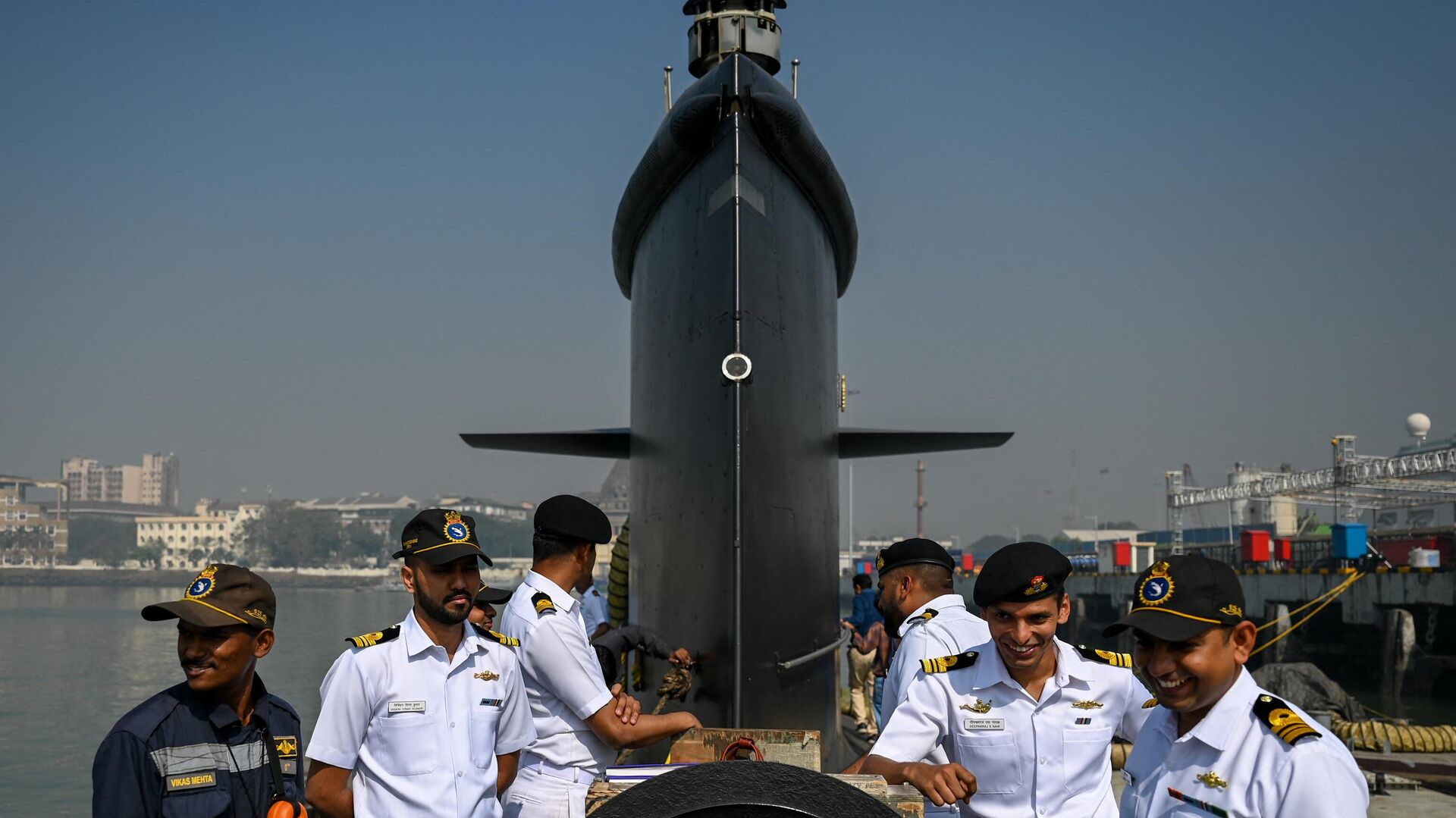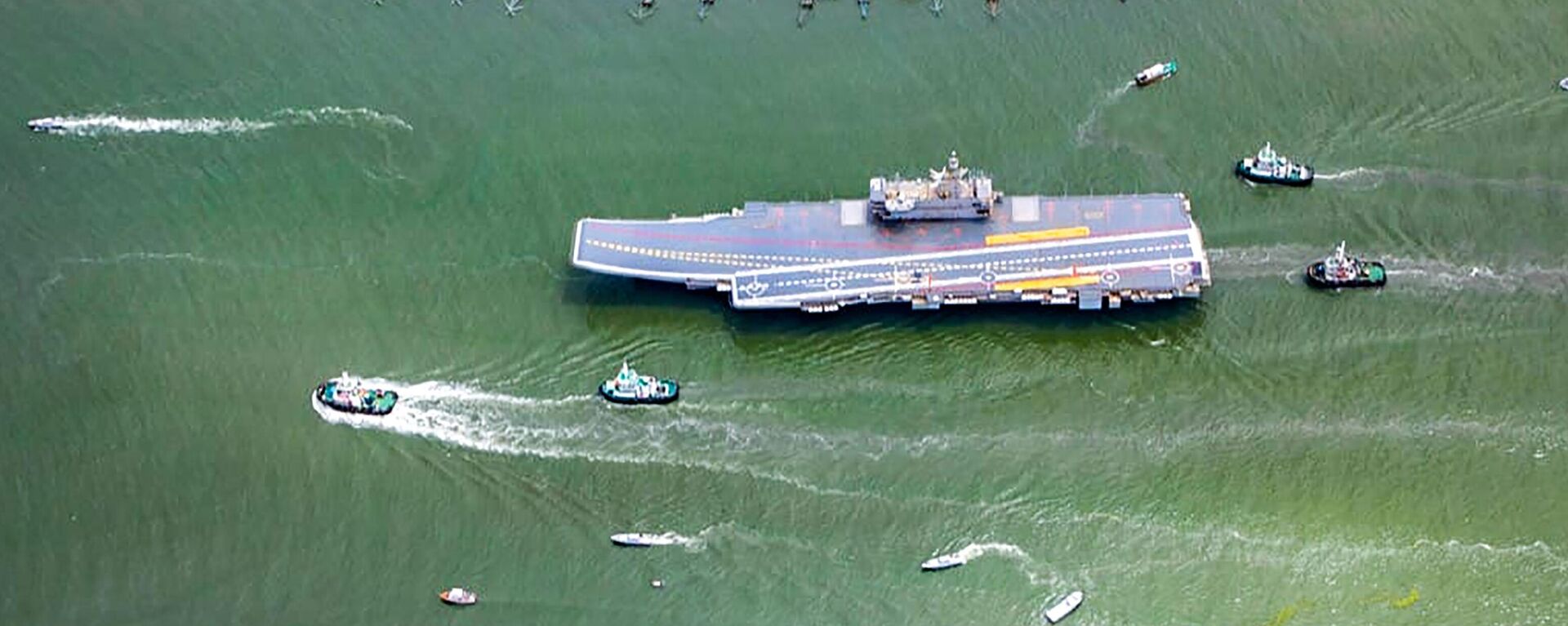https://sputniknews.in/20240911/aip-transforms-indias-conventional-submarines-into-formidable-naval-assets-8135704.html
AIP Tech Transforms India's Conventional Submarines Into Formidable Naval Assets
AIP Tech Transforms India's Conventional Submarines Into Formidable Naval Assets
Sputnik India
India's successful development of the Air Independent Propulsion (AIP) system represents a significant milestone for the country's military-industrial complex, a naval expert has said.
2024-09-11T19:03+0530
2024-09-11T19:03+0530
2024-09-11T19:14+0530
sputnik opinion
india
germany
france
russia
submarine
indian navy
maritime security
drdo
make in india
https://cdn1.img.sputniknews.in/img/07e8/02/09/6493306_0:159:3078:1890_1920x0_80_0_0_2dc43e04718dfee1644217f277e0b393.jpg
India's successful development of the Air Independent Propulsion (AIP) system represents a significant milestone for the country's military-industrial complex, a naval expert has said.According to Aritra Banerjee, who co-authored the book "The Indian Navy@75: Reminiscing The Voyage", the AIP system enhances the operational capabilities of India's conventional submarines, allowing them to remain submerged for extended periods without surfacing to recharge batteries.Banerjee reckons that this will significantly strengthen India's submarine fleet, both strategically and operationally, while also opening up possibilities for technology exports, further solidifying India's position in the global defence ecosystem.The strategic affairs commentator added that the development of AIP is a testament to the Defence Research and Development Organisation's (DRDO) capacity to integrate advanced technology into India's defence systems.He believes that this achievement will likely lead to further investment in research and development, expanding the capabilities of India's military-industrial complex, and making India more competitive globally in the high-tech defence domain.He underlined that the integration of the AIP system fundamentally alters the combat effectiveness of India's conventional submarines by extending their submerged endurance.Traditionally, diesel-electric submarines must surface or snorkel to recharge their batteries, making them vulnerable to detection by enemy forces. With the AIP system, submarines can remain underwater for extended periods without the need to expose themselves to potential threats, thus drastically improving their stealth capabilities.The naval historian pointed out that stealth is the cornerstone of effective submarine warfare. Therefore, by minimizing the frequency of surfacing, an AIP-equipped submarine can remain undetected for days or even weeks, giving it the tactical advantage of surprise. This enables the submarine to carry out missions such as intelligence gathering, reconnaissance, and area denial without alerting adversaries.Additionally, the operational flexibility provided by AIP ensures that submarines can conduct extended missions without logistical constraints, improving their overall combat readiness, he remarked.In a nutshell, the AIP system transforms conventional submarines into formidable assets in modern naval warfare, enhancing their survivability, lethality, and strategic reach. This development underscores India's capability to field cutting-edge technology, ensuring its fleet remains competitive in an evolving maritime security landscape, the international relations analyst commented.Meanwhile, Bengaluru-based defence expert Girish Linganna labeled the AIP as the game-changer for the South Asian nation's submarine flotilla.He opined that this technology is particularly useful in areas like the Arabian Sea, where shallow waters make large nuclear submarines less effective.Banerjee and Linganna's comments come on the back of DRDO chief Dr. Samir V Kamat confirming that India has mastered AIP and will equip the Indian Navy's Scorpene-class submarines with the technology by 2026.
https://sputniknews.in/20240808/whats-behind-navys-pursuit-of-more-aircraft-carriers-7985436.html
india
germany
france
russia
Sputnik India
feedback.hindi@sputniknews.com
+74956456601
MIA „Rossiya Segodnya“
2024
Pawan Atri
https://cdn1.img.sputniknews.in/img/07e6/0c/13/139630_147:0:831:684_100x100_80_0_0_8fa2b25903e7787fe6a2698552c167df.png
Pawan Atri
https://cdn1.img.sputniknews.in/img/07e6/0c/13/139630_147:0:831:684_100x100_80_0_0_8fa2b25903e7787fe6a2698552c167df.png
News
en_IN
Sputnik India
feedback.hindi@sputniknews.com
+74956456601
MIA „Rossiya Segodnya“
Sputnik India
feedback.hindi@sputniknews.com
+74956456601
MIA „Rossiya Segodnya“
Pawan Atri
https://cdn1.img.sputniknews.in/img/07e6/0c/13/139630_147:0:831:684_100x100_80_0_0_8fa2b25903e7787fe6a2698552c167df.png
air independent propulsion, air independent propulsion indian navy, aip indian navy, air independent propulsion submarine india, air independent propulsion indian submarine, aip submarine india, aip indian submarine, drdo air independent propulsion, drdo aip, indian navy news, indian submarine news, scorpene-class submarines, scorpene class submarine indian navy, drdo chief, dr. samir v kamat,
air independent propulsion, air independent propulsion indian navy, aip indian navy, air independent propulsion submarine india, air independent propulsion indian submarine, aip submarine india, aip indian submarine, drdo air independent propulsion, drdo aip, indian navy news, indian submarine news, scorpene-class submarines, scorpene class submarine indian navy, drdo chief, dr. samir v kamat,
AIP Tech Transforms India's Conventional Submarines Into Formidable Naval Assets
19:03 11.09.2024 (Updated: 19:14 11.09.2024) The successful development of Air Independent Propulsion (AIP) positions India among an elite group of countries capable of creating such systems, including Germany, France, Sweden, and Russia.
India's successful development of the Air Independent Propulsion (AIP) system represents a significant milestone for the country's military-industrial complex, a naval expert has said.
According to Aritra Banerjee, who co-authored the book "The Indian Navy@75: Reminiscing The Voyage", the AIP system enhances the operational capabilities of India's conventional submarines, allowing them to remain submerged for extended periods without surfacing to recharge batteries.
"From an industrial perspective, AIP technology showcases India's growing self-reliance in defence technology. It signals a shift from dependency on foreign suppliers to indigenous development of advanced technologies, in line with the "Atmanirbhar Bharat" (self-reliant India) vision," he told Sputnik India on Wednesday.
Banerjee reckons that this will significantly strengthen India's submarine fleet, both strategically and operationally, while also opening up
possibilities for technology exports, further solidifying India's position in the
global defence ecosystem.
The strategic affairs commentator added that the development of AIP is a testament to the Defence Research and Development Organisation's (DRDO) capacity to integrate advanced technology into India's defence systems.
He believes that this achievement will likely lead to further investment in research and development, expanding the capabilities of India's military-industrial complex, and making India more competitive globally in the high-tech defence domain.
"As the military-industrial complex matures, it will also create synergies between public and private sectors, fostering innovation and stimulating the growth of indigenous defence manufacturing," Banerjee emphasised.
He underlined that the integration of the AIP system fundamentally alters the combat effectiveness of India's conventional submarines by extending
their submerged endurance.
Traditionally, diesel-electric submarines must surface or snorkel to recharge their batteries, making them vulnerable to detection by enemy forces. With the AIP system, submarines can remain underwater for extended periods without the need to expose themselves to potential threats, thus drastically improving their stealth capabilities.
The naval historian pointed out that stealth is the cornerstone of effective submarine warfare. Therefore, by minimizing the frequency of surfacing, an AIP-equipped submarine can remain undetected for days or even weeks, giving it the tactical advantage of surprise. This enables the submarine to carry out missions such as intelligence gathering, reconnaissance, and area denial without alerting adversaries.
"The enhanced endurance also allows for prolonged patrols in contested areas, providing India with a strategic edge in critical maritime zones, particularly in the Indian Ocean Region (IOR), where maintaining underwater dominance is vital against potential adversaries," Banerjee asserted.
Additionally, the operational flexibility provided by AIP ensures that submarines can conduct extended missions without logistical constraints, improving their
overall combat readiness, he remarked.
"AIP-equipped submarines are not only more lethal but also more resilient in high-threat environments. They can engage in anti-surface and anti-submarine warfare, laying minefields, and launching precision strikes from a concealed position—all without risking detection during critical moments of the operation," Banerjee explained.
In a nutshell, the AIP system transforms conventional submarines into formidable assets in modern naval warfare, enhancing their survivability, lethality, and strategic reach. This development underscores India's capability to field cutting-edge technology, ensuring its fleet remains competitive in an evolving maritime security landscape, the international relations analyst commented.
Meanwhile, Bengaluru-based defence expert Girish Linganna labeled the AIP as the game-changer for the South Asian nation's submarine flotilla.
He opined that this technology is particularly useful in areas like the
Arabian Sea,
where shallow waters make large nuclear submarines less effective.
"AIP-equipped submarines can carry out patrols and defense missions close to shore with greater endurance, filling the gap between conventional and nuclear-powered submarines in India's naval fleet," Linganna concluded.
Banerjee and Linganna's comments come on the back of DRDO chief Dr. Samir V Kamat confirming that India has mastered AIP and will equip the Indian Navy's Scorpene-class submarines with the technology by 2026.
"When the Indian Navy's P75 Scorpene submarine comes for refit in 2026, this AIP is going to be inserted by cutting the submarine and it will improve the capabilities of our conventional submarines significantly. A submarine's success lies if it does not resurface because if it does, then it gets detected. So if submarines can stay submerged for a long time which the AIP allows you to, your success rate improves dramatically and it gives significant capabilities to our Navy," Kamat said last week.



